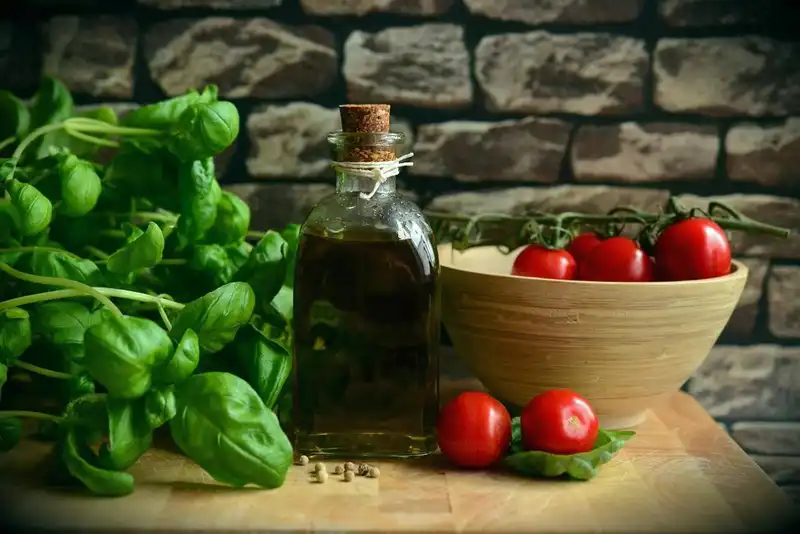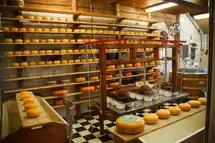What is food production?
Food production is the process of making food. It is a multi-stage process that begins with harvesting the raw materials and ends with packaging and distribution.
The Link Between Food Production and Your Customers' Health
What is Food Production?
The term food production refers to all of the processes and activities involved in taking raw ingredients and turning them into finished food products that are ready for consumers. This includes everythingfrom growing and harvesting crops, to processing, packaging and distributing its products. It is a complex process that involves many different players, from farmers, to manufacturers and retailers.
Food production is also the process of preparing food that is suitable for human consumption. The steps involve processing raw material, cooking or mixing them and transforming them into edible items for consumption.
Why Have Restaurants Started Paying More Attention to Food Production?

Food is the foundation of human existence. It is what connects people across race, continent and culture. However, inasmuch as it nourishes, food is also one of the primary sources of disease and illness. According to the Centers for Disease Control (CDC), 48 million people get sick in the United States due to food-borne illnesses every year. About 128,000 are hospitalized and 3,000 die. In addition, food production has emerged as one of the key contributors to environmental pollution. It is these concerns that have compelled food businesses to pay more attention to their food production methods. Here's more-
- Customers are becoming more aware of the problems surrounding food production and are starting to demand that their food manufacturers and food establishments improve their operations to mitigate these problems. Additionally, there is increasing evidence that food produced in a sustainable way is of higher quality and tastes better than food produced unsustainably.
- Sustainable food production is good for the planet, and restaurants that can demonstrate a commitment to sustainability are often seen as being more progressive and forward-thinking.
- A company's food manufacturing and processing practices determine the level of food safety it offers its customers.
- Substandard food production methods can damage a brand's reputation and lead to losses, thereby affecting its growth. A flawed food manufacturing system may risk the health of its customers, and this may sooner or later undo the business itself.
- Unhealthy food production procedures are a primary cause of climate change and the degradation of Environmental Health. All activities that are part of the food system food production, transportation, storage, and even the use of byproducts as landfillslead to greenhouse gas emissions. These ultimately contribute to climate change, the most prominent threat to human existence.
- The increasing popularity of health and wellness trends has brought new focus to food production, as both, manufacturers and foodservice establishments have started to offer healthy, organic alternatives to old staples.
If your customers are eating the food you produce, they should be healthy!
Many people are turning to organic and sustainable foods because they want to know what's in their food.
5 Ways to Improve The Quality of Your Food- No. 1Automate Systems
Get a Management System that automates various aspects of food production. This includes menu management, recipe management and inventory management. Automation will take much of the load off your strained workforce and help them focus on cooking processes and food safety.
Moreover, food safety management systems that take care of a business's Hazard Analysis and Critical Control Points (HACCP) will help it meet food safety requirements and comply with local health laws. With a HACCP system in place, critical control points, such as the right cooking temperature, pH levels, and so on, are constantly monitored and corrected. This automatically improves food quality.
Automated systems that are specifically designed for restaurant inventory management, point of sale, warehouse management, employee scheduling, etc. take care of many of the routine tasks that would otherwise keep your workforce occupied for hours. When software systems efficiently and accurately take care of these tasks, your chefs, servers and kitchen assistants can focus on the more skilled tasks of food production, manufacturing, storage and safety.
No. 2Choose Fresh, Organic Ingredients
Buying the right raw ingredients is another key aspect of ensuring your food quality is not compromised. Make sure you choose fresh, preferably organic food products, be it vegetables or meats. When it comes to food production, organic over processed foods must be your mantra. However, if you have to use processed products such as sauces and syrups for a dish, try to make sure these are used within the prescribed shelf life, and are freshly sourced and sealed at the time of purchase.
But most importantly, choose fresh ingredientsnutrient-rich, they also make sure your food tastes great. Organic food products don't just guarantee food safety, they also impart superior flavor to your final dish. Organic food products that are untouched by pesticides and other chemical products retain their original taste and essence. This helps chefs extract authentic flavors from the food.
No. 3Shop at Farmers' Markets

Shop at local farmers' markets or grow your own products. If you have access to a farmers' market, take advantage of it! Farmers' markets offer produce that is sourced directly from the farm. Not only will the produce be fresher than what you'll find at your regular vendors or suppliers, but you'll also be doing the economy a favor by supporting small local businesses. Such foods are also sure to please customers who take a keen interest in knowing where the items they consume come from.
If you do not have access to a regular farmers' market, you can grow some of the food products you use daily. Growing vegetables or herbs in a kitchen garden or box window can be budget-friendly and lend your dishes authentic flavors. Gardening is a great way to obtain fresh, nutrient-rich produce without having to spend a lot of money. If not the entire food inventory, you can always start small with small patches to grow tomatoes, lettuce or carrots. You can also rear small animals for meat and eggs.
You want to provide your customers with the healthiest food possible, but you don't know how.
You're not alone. There's been a major shift in the way people view food and it's having a huge impact on the industry.
No. 4Educate Your Staff
Educate yourself and your restaurant staff about nutrition. Learn about the nutrient values of food products and know how they change with different cooking processes. The more you know about nutrition, the better equipped you'll be to make informed choices about the food you serve your customers.
When asked about the nutrient value of a dish you produce, you'll be in a better position to tackle the query. With the prolific use of the internet, customers are more aware than ever of the environment, food security and their own health needs. Restaurants need to accordingly up their game to deliver what a customer expects, be it information or service. Train your staff on the basic principles of nutrition and the health benefits of various products, so that you can bring the best out of every ingredient, and impress and enlighten your customers.
5 Ways to Improve The Quality of Your Food- No. 5
Cook from scratch and make sure to use proper storage methods and food labeling practices, so as not to compromise on the quality of the food you serve your customers. When you cook from scratch using whole, unprocessed ingredients, you have much more control over the quality of your food. This means you can avoid preservatives or added sugar and salt that are already present in most processed items, making sure your meals are healthy.
Train your staff to practice proper food storage. If there are leftovers that need to be kept in the refrigerator, make sure these are labeled in a clear, systematic way that specifies the name, shelf life and use-by dates. This will help your staff quickly and efficiently source ingredients they need and avoid confusion between shifts. This will ultimately go on to ensure that food quality is not compromised and the reputation of your business is preserved.
The food industry is a complex system. It's hard for people to know what they're buying and how it impacts their health.
Your customers are demanding more from you, but your kitchen may be a little outdated.


